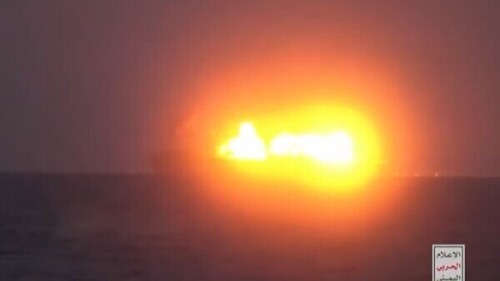Terrorism broadly takes two forms: against random individuals who happen to be at a market place or on a bus at the wrong time; or against specific individuals because of who they are. The latter in turn divides into two: against broad categories of people (the military, Jews, people who wear eyeglasses) and against specific public figures, either individuals or institutions. In effect, these last are assassinations (defined by Merriam-Webster as “to murder (a usually prominent person) by sudden or secret attack often for political reasons”).
Horrific as the first two genres are, assassinations are the most terrifying and effective. Whereas the first two can happen to anyone and have the effect of creating a universal but vague dread, the third focuses on a small pool of targets and sends a specific signal to others not to follow in their footsteps. In general, therefore, assassinations inspire the most consequential fear, intimidate the most, and have the greatest consequences.
Specific Western victims of actual Islamist violence, actual or foiled, include (this list to be updated as needed):
- 1980: Ali Akbar Tabataba’i, Iranian dissident, in the United States*
- 1980: Faisal Zagallai, Libyan dissident, in the United States
- 1990: Rashad Khalifa, Egyptian religious innovator of Islam, in the United States*
- 1990: Meir Kahane, Israel politician of American origins, in the United States*
- 1991: Hitoshi Igarashi, Japanese translator of The Satanic Verses*
- 1991: Ettore Capriolo, Italian translator of The Satanic Verses
- 1993: William Nygaard, Norwegian publisher of The Satanic Verses
- 1995: Pope John Paul II (in the Bojinka plot)
- 2003: George W. Bush, U.S. president (by Ahmed Omar Abu Ali)
- 2004: Theo van Gogh, Dutch artist*
- 2008: Martin Rynja, British publisher of The Jewel of Medina
- 2009: Lars Viks, Swedish artist (by Jihad Jane)
- 2010: Kurt Westergaard, Danish cartoonist
- 2010: Lars Vilks, Swedish artist (by the Alija brothers)
- 2010: Jyllands-Posten, Danish newspaper
- 2012: Charlie Hebdo, French satiric magazine
- 2013: Lars Hedegaard, Danish historian and political analyst
- 2013: Markus Beisicht, German activist
Notes: (1) * indicates a fatality. (2) I consider Mu’ammar al-Qaddafi, head of the Libyan government, to have been an Islamist in 1980. (3) Victims of Muslim but non-Islamist assassinations, such as Malcolm X in 1965, are not listed here; for the record, a Palestinian Christian killed Robert Kennedy in 1968. (4) I list two publications above but not the American military, despite the two assassinations (in Little Rock) of soldiers, on the grounds that Jyllands-Posten and Charlie Hebdo are tiny in comparison with the U.S. armed forces, making the former much more intimidating than the latter.
Statistical comments:
(1) Listed by their identity, the victims include 9 connected to culture and the arts, 5 political figures, 2 religious ones, and 1 analyst. Of the 9 cultural attacks, 4 involved cartoons and 3 Salman Rushdie’s novel, The Satanic Verses.
(2) Vilks is the only person to have been twice the target of Islamist assassination. (Pope John Paul II’s Muslim would-be assassin of 1981, Mehmet Ali Ağca, was not an Islamist.)
(3) Geographically, 11 incidents took place in Europe, 5 in the United States, and 2 in Asia. Of the European cases, 6 took place in Scandinavia and 3 in tiny Denmark.
(4) State involvement can be discerned only in the first 3 cases (Iranian, Libyan, and Saudi, respectively).
(5) In terms of deadliness, 5 attacks led to a fatality, 13 did not.
Lars Hedegaard presented Daniel Pipes with the Danish Free Press Society award in March 2007. |
Mr. Pipes (DanielPipes.org) is president of the Middle East Forum. © 2013 All rights reserved by Daniel Pipes.







